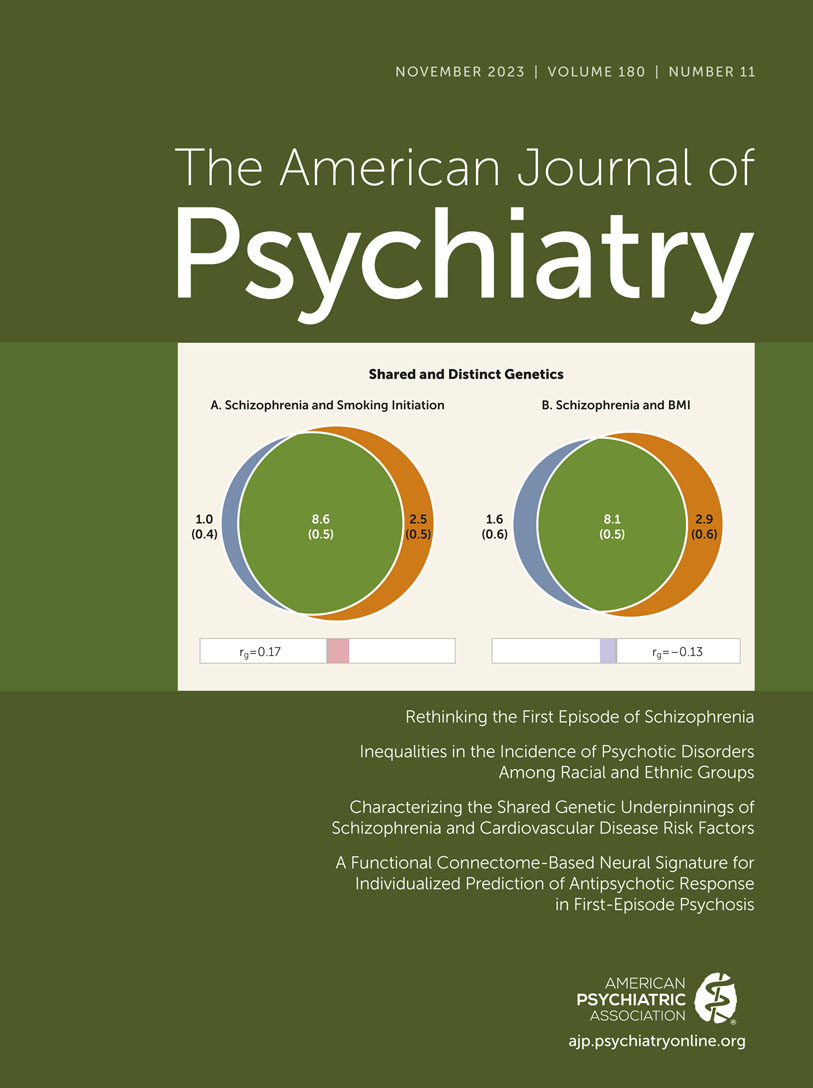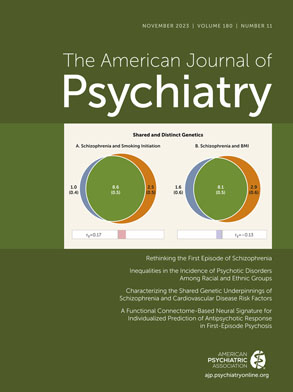The AJP Residents’ Journal is a quarterly e-publication that serves as a forum for resident physicians and fellows to share ideas and experiences in training, clinical practice, research, and careers.
Classic Psychedelics for the Treatment of Depressive Disorders: An Update for Psychiatrists in Training
Lawrence Canale, B.Sc.N., Dhvanit Raval, B.S., Preet Chatha, B.S., Katie Penn, M.S.W., C. Gabrie Weber, B.S., Catherine Stout, M.S., Jeremy Weleff, D.O.
Psychedelics as therapeutic agents have generated significant attention from clinicians and media sources in recent years. The authors provide an update to the psychiatric trainee on the evidence for psychedelics in the treatment of major depressive disorder and treatment-resistant depression. Many modern clinical trials of the classic, serotonergic psychedelics, such as psilocybin, ayahuasca, lysergic acid diethylamide, and N,N-dimethyltryptamine, have shown promise in the treatment of depressive disorders. Future clinical trials should elucidate severe adverse effects and explore the efficacy of psychedelics utilizing larger, double-blinded trials.
Visual Media: An Aperture Into the Past and Future of Psychiatry
Can Misel Kilciksiz, M.D., Jason Xie, M.D., M.Sc., Annelise Bederman, M.D., M.Sc.
Since the first movie in 1895, cinema has significantly influenced psychiatry, and vice versa, in a way that other visual media forms, such as photography or painting, could not. The mutual interest in the mind, behavior, and society made it inevitable for the two fields to study each other. It is important to familiarize ourselves with the history and current portrayals of psychiatry in popular media to understand preconceived perceptions that patients may bring into a therapeutic session. Here, we briefly summarize the relationship between psychiatry and forms of visual media (films, television, and social media) that have become increasingly influential in the 21st century. In addition, we discuss our practical experiences in our training program, through “Psych Movie Nights” and “The Gathering,” and potential future directions.
Antipsychotic Use During Posttraumatic Amnesia in Traumatic Brain Injury
Kevin Ha, M.D., Michael Quinn Fleming, M.D., Alayna Freeman, M.D., Richard Marlow Taylor, M.D.
The present literature review summarizes published studies on posttraumatic amnesia (PTA) outcomes among patients with traumatic brain injury receiving antipsychotics. A PubMed search was conducted with “traumatic brain injury” and “antipsychotic agents” as Medical Subject Headings (MeSH) terms and limited to titles and abstracts (using the tag [tiab]). In the studies reviewed, antipsychotics seemed to help control agitation symptoms during PTA and had varying effects on PTA duration and PTA scores. However, most of the nine articles had observational designs. The efficacy and safety results in the reviewed studies varied and may have been affected by confounding variables. Consequently, research providing high levels of evidence is needed.
ALSO IN THIS ISSUE
Trazodone-Induced Priapism and Increased Recurrence Risk With Antipsychotics
Chelsea Eisenach, M.D., Sean Lynch, M.D.
We’re Worried, Darling: A Critical Review of the Depiction of ECT in a Modern Film
Alexsandra Kovacevich, M.D., Katherine Willie, M.D., Morgan Torcasio, M.D.
Love on the Spectrum: A Realistic TV Depiction of Autism Spectrum Disorder
Chelsea Cosner, M.D.
The Unseen Stars: Girls With Autism
Stella E. Uzoewulu, B.S.
Call for Papers: Special Issue on Contemporary Ethical Issues in Psychiatric Training and Practice

